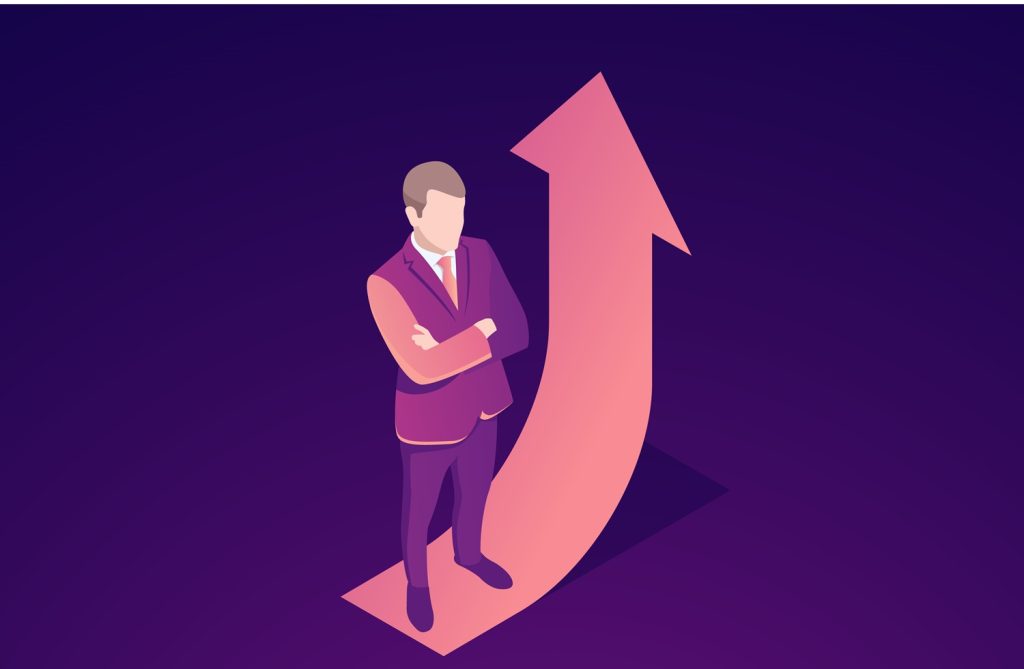
When we promise something to a client and we are still working on it, because it has taken more time than estimated, we feel that we’re so close the completely and submitting it, so let’s stretch, speed up and hand over the perfect deliverable even if it takes a little more time.
The perspective we need to gain is the possible emotions the client is going thro when it’s delayed and there’s no update from us.
Proactively letting them know there’s a small delay will in fact build more trust in Client Centricity
#nilakantasrinivasan-j #canopus-business-management-group #B2B-client-centric-growth #ClientCentricity
Find how you often go wrong in Client Relationship Management & download Leader’s check sheet
The fall of Byju’s, once hailed as India’s ed-tech unicorn, started with its rapid expansion during the COVID-19 pandemic, which led to cash-flow problems. Now, everyone says the company overestimated its ability to manage such rapid growth without fully understanding the risks. But a few years ago, they were regarded as the daredevils of unicorns.
Putting aside the issues of financial mismanagement and other aspects, I wish to emphasize an underlying psychological phenomenon: a cognitive bias called the Dunning-Kruger Effect.
Byju’s is not alone in this game. According to the IBM Institute for Business Value and Oxford Economics, around 90% of Indian startups fail within the first five years.
And it’s not just startups. Google’s recent streak of mediocre performance, including Gemini, and even AstraZeneca’s withdrawal of Covid vaccines are signs of the Dunning-Kruger Effect. So what is this phenomenon?
Dunning-Kruger Effect

It refers to a cognitive bias where people with low ability in a particular area tend to overestimate their competence, while those with high ability may underestimate their competence.
Psychologists Dunning and Kruger discovered this phenomenon in 1999. It stems from the inability to objectively recognize one’s own incompetence.
It is quite common to see kids overestimate their ability to achieve a goal. And it’s not just kids; even politicians often fall into this trap. With as many as 64 countries in the world having elections in 2024, it’s something to watch out for.
In this world of opportunities, thinking big and taking risks are considered success mantras. Professionals are bombarded with data, opinions, and expertise that often lead to overconfidence, where individuals assume they know more than they actually do. Social media platforms and influencers amplify self-assuredness.
And then, professionals often feel pressure to project confidence. Admitting ignorance or seeking help may be perceived as weakness, leading to overestimation of abilities.
Another significant problem is assuming skills in one area automatically translate to expertise in another.
In essence, it is not easy for professionals in today’s world to objectively assess their competence or that of their organization’s.
So, in today’s world, it’s unavoidable to be Dunning-Kruger biased 🙂
11 Dunning-Kruger Effect Traps in Client Relationship Management
When it comes to my forte, Client Relationship Management and Client Centric Business Growth, here are a few pitfalls to watch out for:
- Over-promising to clients: Making commitments that exceed the organization’s capabilities or resources can lead to dissatisfaction and erode trust with clients. Sometimes this is done in mere impulse.
- Creating unrealistic and aggressive plans: Setting overly ambitious targets or timelines without considering potential challenges or constraints can result in missed goals and disappointment for both the organization and its clients.
- Selling a grandeur vision: Like real estate agents, you can sell the future state, assuming everything will fall into place at the right time, but it need not, and that can become a significant disappointment in client relationships.
- Setting unrealistic targets for the team: Unrealistic targets can lead to stress, burnout, and a focus on short-term results over long-term client satisfaction.
- Making too many assumptions: Assuming without sufficient evidence can lead to misunderstandings and misaligned expectations with clients.
- Multitasking: Attempting to juggle multiple tasks simultaneously can lead to decreased focus, reduced quality of work, and increased chances of errors.
- Assuming the client already trusts you enough: Trust is earned through consistent actions and transparent communication over time. Assuming trust merely because you got the contract, particularly without actively cultivating it, can lead to complacency and neglect of the client relationship.
- Overestimating the team’s capabilities: Overconfidence in the team’s abilities can lead to taking on projects beyond their capacity, resulting in delays, quality issues, or failure to deliver on promises.
- Underestimating competition: Ignoring or underestimating competitors can result in missed opportunities and a failure to differentiate the organization’s offerings effectively. It’s important to conduct regular competitive analysis and stay informed about industry trends to remain competitive in the marketplace.
- Oversimplification of the situation at hand: Complex client issues require thorough analysis and thoughtful consideration. Oversimplifying problems can lead to superficial solutions that fail to address underlying challenges effectively.
- Overly relying on outsourcing: While outsourcing can provide valuable expertise and resources, relying too heavily on external partners can lead to a loss of control over quality and communication
As a leader, you can go wrong in Client Relationship Management and fall for the Dunning-Kruger Effect.
Download Client Centric Decision Making Checklist and avoid Dunning-Kruger Traps
#nilakantasrinivasan-j #canopus-business-management-group #B2B-client-centric-growth
Every employee should embrace the following 7 acts of client centric professional. This will help in delivering superior client service and meeting company goals

1. Understand Clients with Empathy
Understanding clients with empathy is the first act of client centric professional and is important for the growth of any organization because it helps to build strong and lasting relationships with them. When you understand and empathize with your clients, you are able to respond to their needs, wants and concerns in a meaningful and personal way. This helps to establish trust and creates a sense of loyalty, which is crucial for maintaining and growing your client base.
2. Take Ownership for their needs
Taking ownership of a customer’s needs is the 2nd act of a client centric professional because it demonstrates a commitment to providing exceptional customer service. By taking ownership of a customer’s needs, the professional is signaling that they are invested in resolving the customer’s problem or meeting their requirements. This helps to build trust and confidence with the customer and can lead to improved customer satisfaction and loyalty.
3. Establish Agile, Fair, Scalable, Transparent and Sustainable Processes
Processes play a critical role in becoming client-centric because they help organizations to understand, manage and deliver value to their clients. . By streamlining operations, mapping the customer journey, implementing feedback mechanisms, and supporting continuous improvement, companies can build a culture that is focused on meeting the needs of their clients.
4. Collaborate internally & externally
Collaboration internally & externally plays a critical role in improving client centricity by enabling organizations to align their efforts towards meeting the needs and expectations of their clients. By working together, organizations can develop a more comprehensive understanding of their clients, provide more effective and personalized solutions, and continuously improve their client-centric approach.
5. Consistently deliver on promises
Consistently delivering on promises is critical in client centricity because it builds trust, demonstrates reliability, increases satisfaction, enhances reputation, and mitigates risk.
6. Continuously improve things for the clients
Continuously improving things for clients requires a commitment to ongoing learning, flexibility, and adaptability in the face of challenges and uncertainty. It may require businesses to invest in resources, such as staff, technology, or data, to support their improvement efforts.
7. Serve with passion
Serving with passion means that an individual is deeply committed to delivering high-quality service and meeting the needs of their customers. This attitude is a critical component of being client-centric, which means that an individual is focused on understanding and meeting the needs of their clients.
We conduct interactive “7 Acts of Customer Centric Professional” workshop in Chennai, Bangalore, Mumbai, Delhi and across India. To know more about the workshop, visit our page
#nilakantasrinivasan-j #canopus-business-management-group #B2B-client-centric-growth
Unlocking authentic communication beyond the hidden pitfalls of corporate buzz words

In the bustling world of B2B organizations, communication is key. The ability to convey ideas clearly and effectively can make or break a business deal. However, sometimes, in the quest for efficiency and professionalism, corporate phrases creep into our everyday language. Clients use them, and internally, our leaders also use them often. I’m referring to phrases like “analysis-paralysis,” “boil the ocean,”, etc. Some of us develop such fondness for such phrases that not a day passes without using them!
While they may sound impressive, these phrases can often obscure the real issues, hinder growth, and compromise client-centricity. Many times, these phrases become part of the persuasion tactics loaded with hidden agendas.
Ultimately, leaders have to earn the trust of their team and their clients. In turn, clients have to earn the trust of their supplier partners. That is B2B.
What is the implied meaning of such phrases when used by your clients and by our leaders? That is what you will read below.
I want to make it clear that there is nothing wrong with using these phrases. In fact, I too use many of them. When used often, it is a sign of personal bias, something that all of us have to watch out for.
I have a dozen such phrases for you here and 7th is my favorite because I hear it all the time.
“Analysis – Paralysis” – Excessive Delays
The phrase “analysis-paralysis” can be used to criticize excessive analysis or decision-making delays, but it may oversimplify the need for thorough consideration in complex situations. It can also be used to control the direction of progress if it is unfavorable or if the outcome may be unpleasant. In essence, this can be used to identify the real problems of the clients or business.
“Dive deep” – The Analysis Abyss
The exact opposite of “Analysis – Paralysis”, leaders want you to continue the analysis because you haven’t reported what they wanted. When taken at its face value, “Dive deep” may encourage excessive micromanagement or deeper analysis. But all it means is that leaders are not yet ready to act based on your report.
“Let’s look at the Big Picture” – Avoiding Immediate Concerns
The phrase “big picture” is often used to encourage long-term thinking, which is important. However, it can be a convenient way to avoid addressing pressing issues. Focusing too much on distant goals can cause us to overlook immediate concerns, leaving clients dissatisfied.
“Boil the Ocean” – The Perceived Folly
The exact opposite of “Let’s look at the big picture”, labeling a project as attempting to “boil the ocean” implies that it’s too ambitious to succeed. In reality, in most cases, it is meant to keep the team from exploring an area that the leader is not comfortable with. While caution is necessary, innovation sometimes requires big leaps.
“Let’s take this offline” – The Evasion Tactic
Moving discussions “offline” might seem like a way to streamline meetings, but it can also be a tactic to avoid transparency or accountability. In most cases, such offline discussions never happen, so the item is completely ignored. Important conversations should be had openly to ensure everyone is on the same page.
“I’m listening” – The Facade of Engagement
Saying “I’m listening” can be a hollow gesture when not followed by genuine understanding and action. Actually, this is an oxymoron. It is also used as a tactic to say, I’m not going to act on this, though I know it. If used in front of the client, this can be harmful to the relationship. Active listening is vital in a client-centric approach, and mere lip service can harm relationships.
“Want it as of yesterday” – Rushing to Mediocrity or No Planning
Urgency is important, but pushing for immediate results can lead to rushed, subpar work. In my personal experience, every time a client or prospect says this, clearly they don’t have any plan at all, whatsoever. Quality should never be sacrificed for speed, especially in a client-centric model.
“Give 110%” – The Culture of Overwork
Though often misunderstood as striving for excellence, leaders use this to convey that they are not happy with your progress. But often employees misunderstand and end up overworked and burned out. It’s crucial to have and set realistic expectations.
“Low Hanging Fruit” – Oversimplifying Challenges
While tackling easy tasks first can be efficient, referring to them as “low-hanging fruit” may downplay the complexity of a project. This phrase is often used by leaders to push a big-ticket item and get it done quickly in their eagerness to see quick results. But it can lead to a higher failure rate and botched execution due to a lack of comprehensiveness and preparation. Clients may start to perceive your organization as making false promises.
“Thinking outside the box” – The Illusion of Innovation
When someone tells you to “think outside the box,” they might be inadvertently stifling creativity. This phrase can pressure employees into unrealistic levels of innovation, pushing them towards ideas that may not be practical or beneficial for the client.
“At the end of the day” – Oversimplifying Complexity
While “at the end of the day” summarizes key points, it can also oversimplify complex issues, potentially neglecting crucial client concerns. It is smart way to neglect everything that is not convenient and stick to what one thinks needs to be done.
“Take the lead” – Pushing Premature Leadership
It is another smart way to nudge the decision making process. Leaders either use this shoo-away responsibility by proactively asking someone else to take the lead or keep it within their fold by encouraging one of their guys to take the lead. It’s a hint that the boss wants this to be done our way! On a serious note, encouraging someone to “take the lead” can be beneficial, but it may also pressure individuals into roles or responsibilities they are not ready for.
In the world of B2B organizations, clear and transparent communication is paramount. Corporate phrases, although well-intentioned, can often hinder collaboration, morale, growth, and client-centricity. To truly serve clients and foster growth, leaders must strike a balance between professionalism and authenticity. And finally, remember, it’s not just about what you say, but how you say it.
Evaluate Client Centricity of your team
An organizational assessment to understand the behavioral and cultural maturity of an organization across 8 dimensions using 4 maturity levels. Unlike traditional assessments, in this survey, participants are given a few random scenarios and have to select what they will do or feel in each of them.
If you are interested to know more, you can also contact us
#nilakantasrinivasan-j #canopus-business-management-group #B2B-client-centric-growth
And how can you ensure they are happy while you are successful?

Making clients happy and satisfied is not easy.
In B2B, it’s not merely ensuring on-time deliveries and meeting quality standards that lead to loyalty.
Some argue that it often involves effective communication, meeting or exceeding expectations, being responsive to their needs, and demonstrating a genuine commitment to delivering quality work.
In complex B2B value chains, clients expect you to lead or support a larger change in their organization and participate in shaping their future. For example, it might involve you to educate their employees to use your products correctly, to help them drive adoption of a new workflow application or to implement an improved process.
“They are looking for a comrade not a mercenary.“
Yet on some other occasions, you wish to change certain behaviors of your client employees for the larger good though it may not be actively supported by the client.
Your failure in driving such changes leads to greater and wider dissatisfaction. I mean it reaches the ears of key stakeholders and decision makers.
It can be disheartening when clients are unhappy despite putting in good work.
Why do you think this happens?
How can you ensure clients are happy while you are successful?
Take 3 mins to check out this video:
Are you a B2B leader who is unsure about how to achieve SUSTAINABLE business growth and do you want to have predictable and consistent growth in your organization?
Then take this quick self-assessment diagnostic and you will have an idea of what your priorities should be.
#nilakantasrinivasan-j #canopus-business-management-group #B2B-client-centric-growth
Background:
A leading group company involved in Engg and Enterprise Solutions for manufacturing sector to group companies & 3rd parties wants to increase sales win rates, C-sat with better targeting and skills and thus improving its client centricity
Condition:
- Projects with few group companies had frequent escalations.
- Most external projects had budget and time overrun.
- Client satisfaction scores were low. Sales Win Rates and projects awarded were of low value.
Big 4 Actions:
- Improved the Project Value and Win rates based on targeting the influencers instead of the decision makers.
- Customer Satisfaction Analytics to build a predictive model and key drivers
- Coaching of Delivery Managers and Project Managers on handling client reviews, communication and relationship management (influencing framework)
- Review of internal project management process and fix internal measures, risk assessment, resource management and client dashboards
Background:
A leading independent terminalling company wants to achieve seamless delivery during build and operate and thus improving client centricity
Condition:
- Frequent surprises due to complex stakeholder network and client dis-satisfaction
- Budget and timeline overrun on large projects
- Lack of accountability for red-flags
Big 3 Actions:
- BD process was not formally defined. BD skills were missing and there were no timelines or deliverables
- Client experience during the Build (NPD) and Operate phases were not measured. Stakeholder management was only at Sr. Leadership level
- Clear Measures of Success for Client Journey were defined
- End to End Process was established with involvement of all internal members (200+)
- RACI for all tasks with internal SLAs was established.
Background:
An ITES arm of a big software company which works with enterprises across industries wanting to improve its client relationship
Condition:
One of their large account ($1Bn) wanted to terminate their enterprise contract due to issues with ITES services. Hence main focus was to prevent the churn by short term fix and long term actions.
Big 5 Actions:
- Based on Client Interviews, employee interview and discovery, identified 4 actions to be immediately initiated (Service quality, Analysis, Client review framework, Org structure change). Facilitated the agreement of action with clients
- Identified delight opportunities to clients by performing Horizontal/Vertical synergy studies and subsequent prioritization roadmap

A Go-To-Market strategy is a plan for how you will bring your products or services to market and reach your target customers. It includes elements such as product positioning, target market, distribution channels, sales and marketing tactics, and key performance indicators.
A good GTM can directly improve the chances of the overall company’s business growth rate.
Here are some steps you can take to create a GTM strategy for your company:
- Understand your target market: It’s essential to have a clear understanding of your target customers, including their needs, pain points, and buying habits. This information can help you to identify the most effective ways to reach and engage with them.
- Define your product positioning: This is how you want your product or service to be perceived by your target customers. It should be based on your understanding of your target market and should take into account your competitive landscape.
- Identify distribution channels: Determine which channels will be most effective for reaching your target customers. This could include online and offline channels, such as e-commerce, retail stores, and direct sales.
- Develop a sales and marketing plan: Once you have a clear understanding of your target market, product positioning, and distribution channels, you can develop a sales and marketing plan that includes tactics such as advertising, public relations, content marketing, and events.
- Set key performance indicators (KPIs): These are metrics that you can use to measure the success of your GTM strategy. Examples of KPIs could include website traffic, number of leads generated, sales, and customer retention.
- Continuously Monitor and Optimize: Once your GTM strategy is in place, it’s important to continuously monitor and optimize it based on the data and feedback you receive. This will help you to adapt to changes in your market and customer needs and fine-tune your approach.
It’s worth noting that creating a GTM strategy is an iterative process. You may need to adjust and refine your strategy as you learn more about your target market and customers, or as the market changes. And also, these steps are general guidelines and the actual steps you need to take might be different based on the specific situation of your company.
#nilakantasrinivasan-j #canopus-business-management-group #B2B-client-centric-growth #Business-growth

Client centricity plays a crucial role in improving EBITDA for B2B companies. When a company is client-centric, it focuses on understanding and meeting the needs of its customers. This can lead to a number of benefits that can help to improve EBITDA.
Knowing the Client needs : Firstly, by understanding the needs of its customers, a company can create products and services that are tailored to meet those needs. This can lead to increased sales and higher profit margins. Additionally, a company that is client-centric is better able to identify and address any pain points that its customers are experiencing, which can lead to improved customer satisfaction and loyalty.
Communicate & Collaborate : Secondly, when a company is client-centric, it can lead to better communication and collaboration with its customers. This can help to build strong relationships, which can lead to repeat business and positive word-of-mouth recommendations. This can lead to increased sales and improved profit margins.
Agile Mindset : Lastly, when a company is client-centric, it is better able to anticipate and adapt to changes in the market. This can include changes in customer needs, competitor activity, and industry trends. By being able to anticipate and adapt to these changes, a company can be more agile and better positioned to capitalize on new opportunities.
In summary, client centricity plays a vital role in improving EBITDA for B2B companies. It enables companies to create products and services that meet customer needs, build strong relationships, and anticipate and adapt to changes in the market. All of these factors can lead to increased sales, improved profit margins, and overall growth for the company.
#nilakantasrinivasan-j #canopus-business-management-group #B2B-client-centric-growth #OKR
Sign-up for collaborat newsletter
